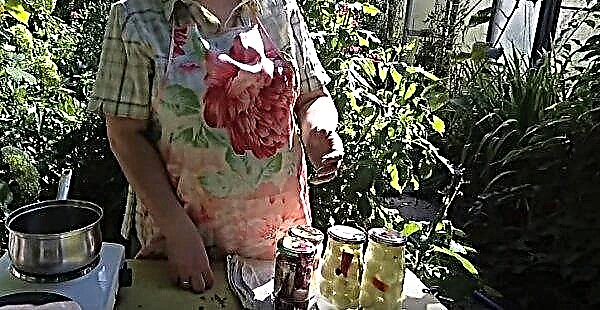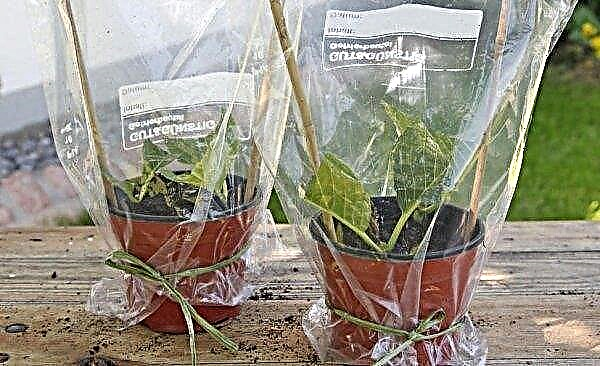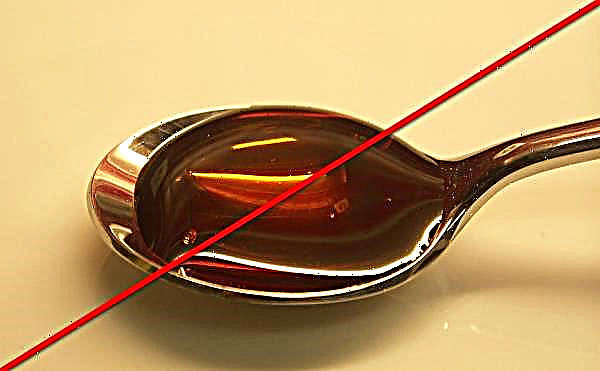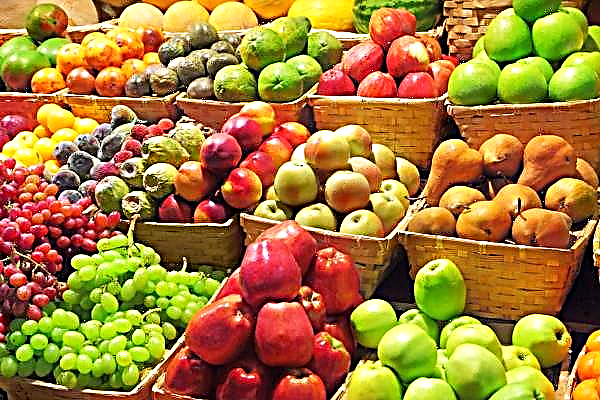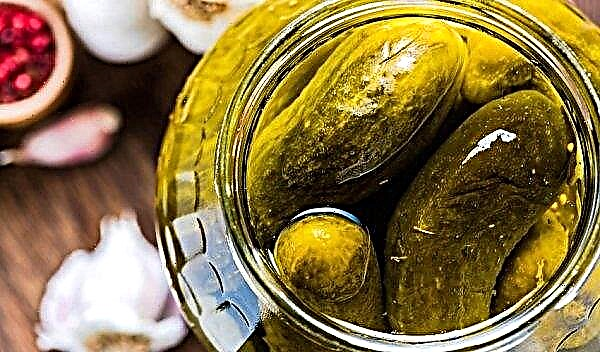Planting seeds in the ground, each gardener is confident in getting a good harvest. But this does not always happen, often when harvesting vegetable growers disappointment overtakes. To get a smooth, smooth and beautiful carrot, you need to know a few rules of agricultural technology. More about this in the article.
The causes of cracks in carrots
The quality of the harvest depends not only on weather conditions, but also on the proper care of the plantings. When picking carrots, gardeners very often get not beautiful and smooth root crops, but cracked and ugly fruits.
We will understand the causes of such a defect. Most often, cracking occurs with an irregular intake of moisture, but the reasons can also be improper feeding, inappropriate soil or untimely harvesting.
Did you know? To maintain the beautiful color of the flamingo feathers, they are fed with carrots. The owners of red cats also practice this. But this food needs very little (1–2 circles) per day.
Irregular watering
If the water regime is violated, cracks appear on the carrots. This occurs as a result of sharp changes in the osmotic pressure inside and outside the root crop. This condition occurs after heavy rains or heavy irrigation of dry beds.

To avoid such troubles, you need to adhere to certain rules:
- strong hydration is needed in the initial stages of carrot growth. In the second half of the growing season, watering is limited;
- it is better to water often, but in moderation. When root crops have already formed, moisturizing is carried out no more than 2 times a week;
- Do not flood the beds abundantly, even if the soil is very dry. It is better to divide the volume of water into several irrigations and carry out hydration at intervals of a day;
- watering is carried out in the morning or evening hours. In no case should this be done in extreme heat;
- water is added not to the beds, but between the rows;
- if the garden is located in a wet area, then in the aisles you can plant hygrophilous plants (for example, lettuce), which absorb some of the moisture;
- To preserve soil moisture, mulching with rotted sawdust or compost is practiced. If the soil is not mulled, then after each watering it must be loosened;
- watering stops a month before harvesting. You need to follow the weather forecast to select the most suitable period for harvesting.
Important! Based on the foregoing, it follows that carrots need constant, uniform and moderate watering, limited after the formation of root crops.
Incorrect fertilizer application
Another reason for cracking the fruit may be the introduction of the wrong fertilizing or an excess of fertilizer. As a result of such violations, root crops grow rapidly, acquire friability and become unstable to external factors.

To prevent this from happening, you must follow these recommendations:
- fertilizing with nitrogen is necessary only at the beginning of the growing season (30 days after emergence), during the growth of root crops they are stopped;
- in the growth phase of the root of the carrot, phosphorus and potassium fertilizers are needed;
- Fertilizing with fresh organic matter is prohibited. Infusions of bird droppings, mullein and weeds are used, like nitrogen fertilizers, only in the first month after emergence;
- Fresh manure can not be applied to the beds and before planting carrots. For this purpose, compost, rotted manure or peat are used;
- Feeding with ash is best done in the form of a solution, since dusting with ash will change the acidity of the soil and provoke abundant root formation (“shaggy”);
- an overabundance of even the fertilizers needed during a given period also causes cracking; therefore, it is necessary to adhere to the norms of fertilizing.
Did you know? For sweets, weight watchers, carrot sweets were created. They contain carrot juice and pulp, subjected to special heat treatment, which enhances the antioxidant properties 5 times. There is also chocolate with the pulp of carrots and bran, which has an unusual taste and calorie content of about 300 kcal in a 60 g bar.
Late harvest
Harvesting dates should also not be delayed, as cracks may appear on overripe vegetables. To avoid this, you need to know the duration of maturation of carrots and observe these terms.
If you plan to get early production, then sown early varieties (sowing which occurs in April). Late varieties are used for storage, most of them are also resistant to cracking. Sowing of the latter is carried out a little later - in May.

Dense soil
Dense soil may be another prerequisite for cracking root crops. This is explained by the fact that with growth, carrots overcome the resistance of heavy soil, which leads to a defect.
Therefore, when choosing a site for landing, the following should be considered:
- the vegetable prefers to grow on breathable, light sandy or sandy loamy soils;
- it is better not to make landings on clay soils. But if it is impossible to avoid this, then plant varieties with short fruits (Karotel, Shantane or Alyonka);
- On heavy soils, bulk beds (up to 30–40 cm) of fertile land are practiced, into which vegetables are planted. You can also dig up land from a specific area and fill it with fertile soil;
- improve the structure of heavy soils by adding river sand, peat, rotted compost or sawdust;
- in order to avoid defects on carrots, planting in the combs is used. This method is suitable for climatic zones with heavy rainfall, low temperatures and well-structured soils. For southern regions in which ridges are prone to severe overheating, this method is not suitable;
- soil quality can be improved by using green manure. After harvesting produce sowing of oats, wheat or rye. Such winter siderates are dug in the spring a month before planting carrots. This green fertilizer not only optimizes the structure of the soil, but also fills it with nutritious compounds.
High nitrogen level in the soil
We have already spoken about the incorrect application of fertilizing, but I would like to say separately about nitrogen fertilizers. They cause strong growth and provoke friability, wateriness and, as a result, cracking of the root crop, therefore such top dressing is used only at the beginning of carrot growth.

Why it is important to prevent carrot cracking
Having dealt with the causes of cracks in root crops, we clarify for what reasons the appearance of this defect should be avoided.
Although cracking does not affect the taste, it has a number of side effects:
- the most important thing is that such vegetables begin to deteriorate quickly, which greatly reduces the shelf life;
- transportation becomes more complicated. Deformed products during transportation are damaged even more;
- much more waste occurs during cleaning than when using whole fruits. And the process itself is somewhat complicated;
- the fruits have an unattractive presentation. To top it off, cracks are clogged with earth, which complicates the processing.
How to keep cracked carrots
With the storage of bursting fruits, great difficulties arise. They begin to deteriorate quickly, and it is not possible to extend the shelf life. The only way to save the crop is to process it faster. Root crops can be grated or chopped and frozen in the freezer, laid out in bags.
Important! You do not need to defrost frozen carrots before cooking.
It can also be used for cooking winter preparations (lecho, dressings, salads or sauces). We wish you all a good and quality crop. Armed with the information received, you can avoid mistakes and grow a whole, tasty and long-stored product.

